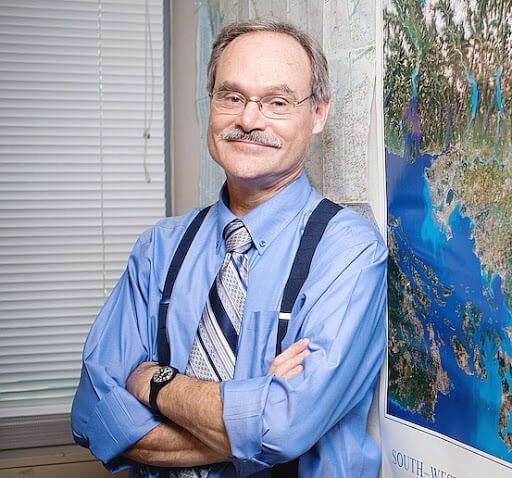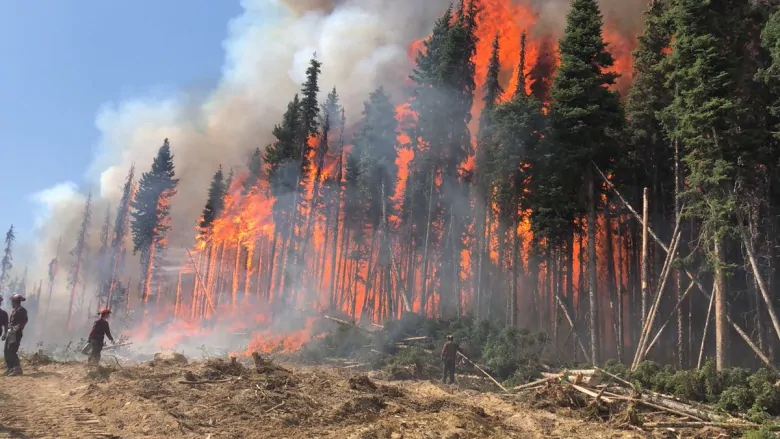 Professor Roland Stull, a leading expert in the field of forest fires and climate, has recently launched a new course, "ATSC 413: Forest Fire Weather and Climate," which focuses on the complex interactions between weather patterns, climate change, and the occurrence of forest fires. The course is designed to provide students with a comprehensive understanding of the science behind forest fires, as well as the various strategies for mitigating their impact on weather interpretations. Professor Stull shares his insights on the importance of this subject and some exciting developments taking place in the field.
Professor Roland Stull, a leading expert in the field of forest fires and climate, has recently launched a new course, "ATSC 413: Forest Fire Weather and Climate," which focuses on the complex interactions between weather patterns, climate change, and the occurrence of forest fires. The course is designed to provide students with a comprehensive understanding of the science behind forest fires, as well as the various strategies for mitigating their impact on weather interpretations. Professor Stull shares his insights on the importance of this subject and some exciting developments taking place in the field.
Get ready to learn more about the crucial role of weather and climate in forest fires and how we can work together to protect our forests and communities.
Words by Aylin Turker, Digital Content Creator
What should students taking this course expect to learn? How does this relate to climate change in British Columbia?
The first third of the course will be talking about forest fire fundamentals. What causes fires, how do they grow, and how do we identify fire indices based on the weather? Then the middle part of the course will be learning  how to take weather maps and use that to forecast forest fire conditions. The last third will be to put this back into how it affects society, which is part of your question about how it affects BC. We’ll be focusing on fires in Western Canada not just BC, and this course will be case-study based. So, each week we’ll look at a different fire. Some will be in BC, some will be in Alberta, and some will be in Northwest territories. This relates to climate change in BC in two ways: one, the smoke from forest fires affects the sunlight coming to the earth and changes the temperature - this is a short-term effect. Another way we can look at this is how climate affects forest fires themselves. That’s an active area of research we are actually doing now, and the results from that will hopefully make it into the course.
how to take weather maps and use that to forecast forest fire conditions. The last third will be to put this back into how it affects society, which is part of your question about how it affects BC. We’ll be focusing on fires in Western Canada not just BC, and this course will be case-study based. So, each week we’ll look at a different fire. Some will be in BC, some will be in Alberta, and some will be in Northwest territories. This relates to climate change in BC in two ways: one, the smoke from forest fires affects the sunlight coming to the earth and changes the temperature - this is a short-term effect. Another way we can look at this is how climate affects forest fires themselves. That’s an active area of research we are actually doing now, and the results from that will hopefully make it into the course.
How will students be able to take this course? Do they need to be in a particular program or do they need any prerequisites?
There’s only one prerequisite. You have the choice of either taking GEOG 200 or ATSC 201. A lot of Environmental Science students are already taking one or both of those courses. So, many of them will be able to get in as well as Geography students and Atmospheric Science students.
Will any of the learning materials in the course be open-source one day?
They all will be! There’s no textbook for this course. We will make our textbook online essentially and make it available and free for everyone.
Why did you decide to create this course? What were your motivations and how does it relate to the specific climate threats BC is facing?
We had some nasty fires in BC and it has affected a lot of people. So, there’s a lot of interest in that regard. The motivation partly was that atmospheric scientists, who are one of the groups taking this course, atmospheric science students, need to know how to forecast the weather, but the way to forecast the weather has changed dramatically over the past decade. It used to be done manually by people drawing weather maps. These days it is all done by computer. So, we’ll be teaching the modern way to interpret weather maps and we’ll be using fire case studies as the motivation to learn that.
What was the process like for developing such a course at UBC? Could you tell us about any challenges you encountered during the process and how you overcame them?
I have to thank Tara Ivanochko, Academic Director of the Sustainability Hub, and her team for the grant. They are the ones that allowed me to partner up with the Geography department to create this new interdisciplinary course and that was great. Some roadblocks are just the “normal” tremendously large amounts of paperwork required to get a new course in the books. It took about a year just to get the paperwork to go through."
Do you have any advice for faculty at UBC who are embarking on creating a new climate or sustainability course at UBC?
There is a lot of opportunity to create new courses now. With the increased interest of students taking the courses, support from UBC personnel, and money to develop such courses, there are fewer roadblocks than there have been in the past. I encourage the professors and the instructors to go for it.
Visit UBC’s Weather Forecast Research Team (WFRT)’s webpage for more information https://wfrt.eoas.ubc.ca